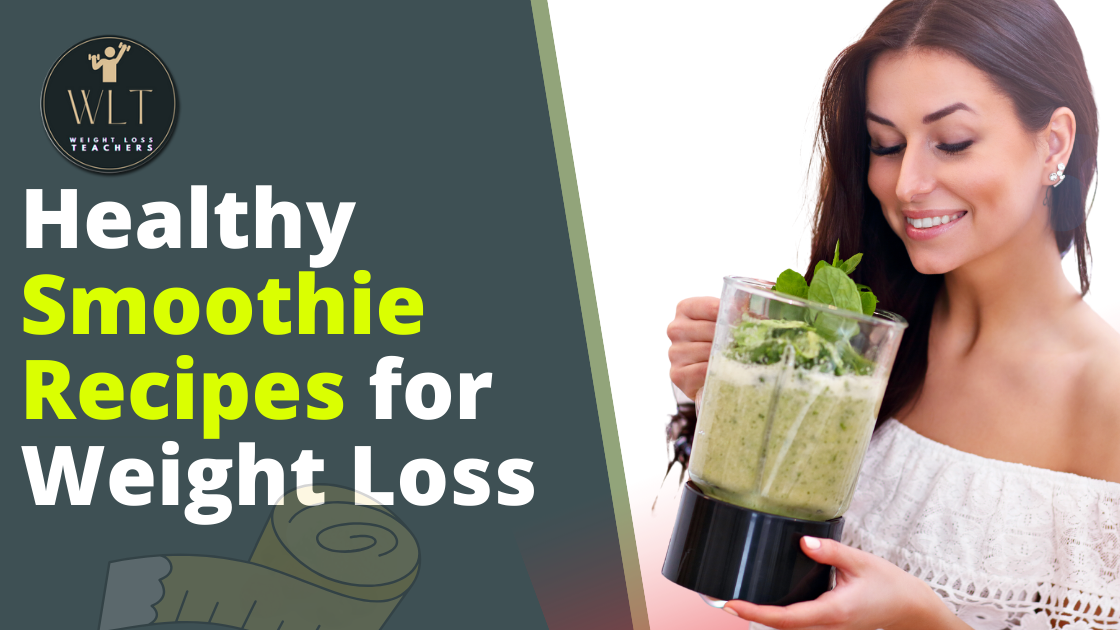
Healthy Smoothie Recipes for Weight Loss
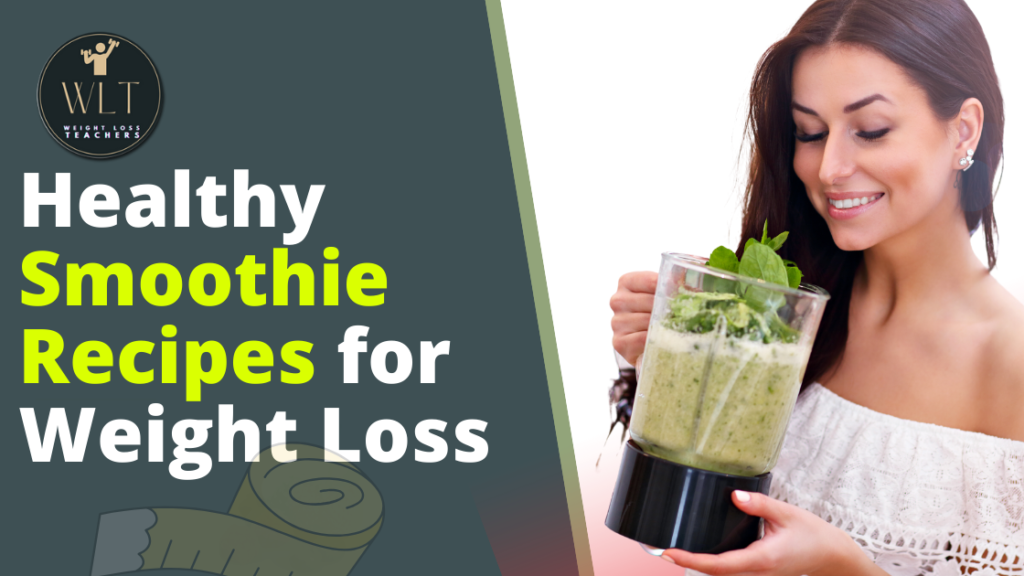
Weight loss is a goal that many people seek for a variety of reasons, including improved health, better self-confidence, and improved general well-being. While there is no one-size-fits-all approach to losing weight, including healthy smoothie recipes for weight loss in your diet can be an effective and pleasurable way to achieve your weight loss goals.
Table of Contents
Introduction
Smoothies are not only delicious, but they also provide a wealth of nutrients that aid in weight loss. In this detailed article, we will go into the science of using healthy smoothies for weight loss, their nutritional benefits, and practical methods for incorporating them into your weight loss journey.

Science Behind Smoothies and Weight Loss
- Weight Loss Fundamentals
Millions of people all over the world strive to lose weight for a variety of reasons, including better health, increased self-esteem, and a desire for a more fulfilling life. It is crucial to understand the underlying concepts of weight loss before starting this journey. Weight loss is fundamentally based on calorie deficit, which happens when the number of calories lost through physical activity and metabolism exceeds the number of calories absorbed through food and beverages. This caloric difference causes the body to use stored fat as an energy source, resulting in weight loss.
The physics behind this approach is based on thermodynamic rules. To maintain basic processes and carry out daily tasks, our bodies require a particular quantity of energy, measured in calories. Excess energy is deposited as fat when we consume more calories than our bodies require. When we consume fewer calories than we spend, our bodies begin to break down stored fat to make up for the energy shortage.
- How Healthy Smoothies For Weight Loss Work
Due to their distinct composition and nutritional profile, smoothies play an important role in weight loss.
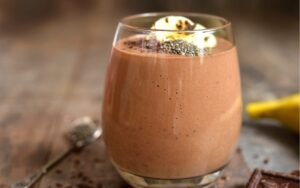
High Fiber Content: Smoothies are well-known for their high fiber content, which is an important component in the fight against obesity. Fiber is indigestible and adds bulk to our diet. It provides a long-lasting feeling of fullness in smoothies, avoiding overeating and lowering overall calorie intake. This fiber-induced satiety is critical for maintaining the essential calorie deficit for weight loss.
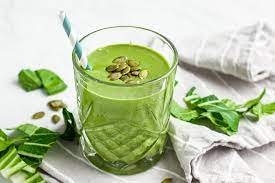
Nutrient Density: Smoothies are packed with vitamins, minerals, and antioxidants. These micronutrients are essential for a variety of body functions, including metabolism, immune system function, and overall health. By putting nutrient-dense items in your smoothies, such as leafy greens, fruits, and protein sources, you ensure that your body receives essential nutrients while limiting your consumption of empty calories from processed and sugary foods.
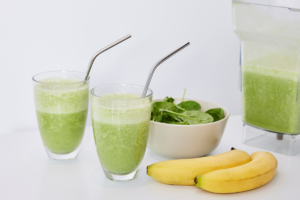
Hydration: Adequate hydration is sometimes disregarded, although it is an essential component of any weight loss strategy. Many smoothie ingredients, such as water-rich fruits and vegetables, help to keep your body hydrated. Proper hydration benefits general health and can improve the body’s metabolic processes, resulting in weight loss. Furthermore, thirst and hunger can be confused, resulting in needless calorie consumption. By putting hydrated components in your smoothies, you can help distinguish between actual hunger and thirst, lowering your risk of overeating.

Meal Replacement: One of the most notable benefits of smoothies in terms of weight loss is their ability to serve as a convenient and nutritious meal replacement. Smoothies can be customized to include the necessary macronutrients, such as carbs, protein, and healthy fats, ensuring a balanced meal with fewer calories than a conventional solid meal. Replacing one or more meals with a well-structured smoothie can help create the calorie deficit required for weight loss. However, it’s critical to make sure these meal replacement smoothies are nutritionally sound, with enough protein and fiber to keep you full until your next meal.
Benefits of Healthy Smoothie Recipes for Weight Loss
Smoothies are not only delicious, but they also provide a plethora of nutritional benefits that can help you lose weight. Their adaptability allows for the incorporation of a diverse range of ingredients, each with its own set of benefits.
- Wide Range of Ingredients
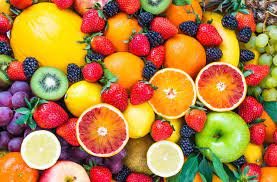
Fruits: For good reason, fruits are a staple in smoothies. Berries, bananas, and citrus fruits are not only delicious but also high in vitamins, minerals, and antioxidants. These nutrients are essential for good health and well-being. Furthermore, the natural sweetness of fruits eliminates the need for added sugars, which are a common cause of excess calorie intake.
Berries with high antioxidant content, such as strawberries, blueberries, and raspberries, are particularly noteworthy. Antioxidants protect the body from oxidative stress, which can contribute to weight gain. They also promote cellular health and immune function.
Bananas are high in potassium, a mineral that helps maintain proper muscle function and electrolyte balance. Bananas contain potassium, which can help prevent muscle cramps during exercise, promoting consistent physical activity, which is necessary for weight loss.
Citrus fruits, such as oranges and grapefruits, are well-known for their high vitamin C content, which is necessary for a healthy immune system. Furthermore, grapefruit has been linked to appetite suppression, making it an appealing option for those looking to limit their calorie intake.
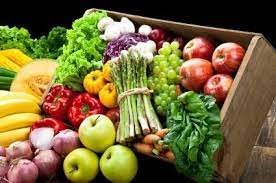
Vegetables: Leafy greens like spinach and kale are high in fiber and low in calories. They are low in calories but high in fiber and a variety of nutrients. Adding vegetables to healthy smoothie recipes for weight loss increases not only their nutritional value but also their satiety factor.
Spinach contains vitamins A and K, as well as folate, which is necessary for cell division and overall health. Its high fiber content aids digestion and promotes feelings of fullness, reducing the likelihood of snacking on calorie-dense foods between meals.
Kale is a nutritional superstar, packed with vitamins A, C, and K, as well as calcium and iron. Its fiber content supports digestive health, while its vitamins and minerals promote bone health and protect against chronic diseases.

Protein: Protein is a crucial component of healthy smoothies for weight loss. Ingredients like Greek yogurt, whey protein powder, and nut butter provide an essential nutrient that helps build and repair muscles, increases satiety, and supports fat loss.
Greek yogurt is a rich source of protein, particularly casein and whey. These proteins release slowly, providing a steady source of amino acids to maintain muscle mass and curb appetite. Additionally, the probiotics in yogurt can promote gut health, which is increasingly linked to weight management.
Whey protein powder is a convenient way to boost the protein content of healthy smoothie recipes for weight loss. It is easily digestible and contains all essential amino acids, making it an excellent choice for muscle recovery and growth. Protein also has a high thermic effect, meaning it requires more energy to metabolize, which can enhance overall calorie expenditure.
Nut butter, such as almond or peanut butter, not only adds creaminess and flavor to your smoothie but also provides healthy fats and protein. The combination of fat and protein helps maintain feelings of fullness, reducing the temptation to snack on less nutritious foods.
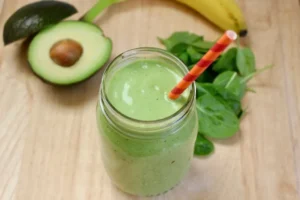
Healthy Fats: Healthy fats are an essential component of a balanced weight loss smoothie. Ingredients like avocado, flaxseeds, and chia seeds contribute to a feeling of fullness and provide sustained energy throughout the day.
Avocado is rich in monounsaturated fats, which have been linked to improved heart health and reduced inflammation. The creamy texture of avocado adds richness to your smoothie while promoting satiety.
Flaxseeds are a great source of omega-3 fatty acids, which support brain function and heart health. They are also rich in fiber, which aids in digestion and keeps you feeling full.
Chia seeds are a fiber and protein powerhouse. When added to healthy smoothie recipes for weight loss, they absorb liquid and swell, creating a gel-like consistency that helps you stay full longer and control your appetite.
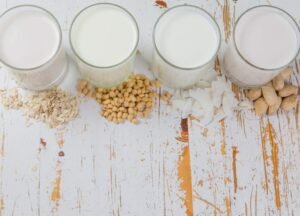
Liquid Base: The choice of liquid base in your smoothie can significantly impact its overall calorie content and nutritional profile. Unsweetened almond milk, coconut water, or plain water are excellent options for a low-calorie base that ensures proper hydration.
Unsweetened almond milk is a dairy-free alternative that adds creaminess without excessive calories. It is low in sugar and contains essential vitamins and minerals like calcium and vitamin D.
Coconut water is a natural electrolyte-rich liquid that helps maintain hydration, making it an excellent choice for post-workout recovery. However, it should be used in moderation due to its naturally occurring sugars.
Plain water, while not adding any additional nutrients, is the ultimate calorie-free hydration choice. It can be used as a base or combined with other liquids to create your desired consistency.
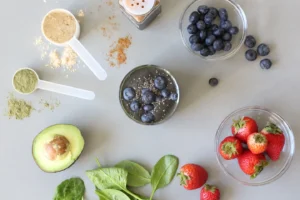
- Balanced Macronutrients
A well-made weight loss smoothie provides a balanced ratio of macronutrients, including carbohydrates, protein, and fats. This balance is crucial for effective weight loss as it helps regulate blood sugar levels, reduce cravings, and sustain energy levels throughout the day.
Carbohydrates provide a quick source of energy, which is essential for daily activities and workouts. The carbohydrates in your smoothie should primarily come from whole fruits and vegetables, ensuring a steady release of energy and a reduced risk of blood sugar spikes and crashes.
Protein plays a crucial role in muscle preservation, repair, and appetite control. Including protein in healthy smoothie recipes for weight loss helps maintain lean muscle mass and prevents muscle loss during calorie restriction.
Healthy fats add to feelings of fullness and provide prolonged energy. They also aid in the absorption of fat-soluble vitamins found in your smoothie, such as vitamins A, D, E, and K.

- Nutrient Absorption
One unique feature of smoothies is the way they boost nutritional absorption. The blending process breaks down the cell walls of fruits and vegetables, making the nutrients more available for absorption. This higher nutritional bioavailability means that your body can obtain maximum advantages from the foods you consume. In essence, your body receives a concentrated dose of vitamins, minerals, and antioxidants, which support general health and can aid in weight loss.
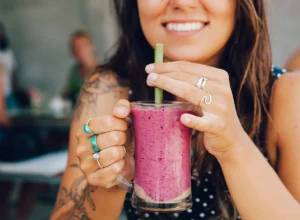
- Reduced Sugar Intake
One of the biggest obstacles to weight management is reducing sugar intake. Consuming too much sugar can cause blood sugar levels to rise, followed by crashes that make you crave more sugary foods. Smoothies can be a smart tool for reducing sugar intake while fulfilling sweet desires.
By using whole fruits and natural sweeteners like honey or maple syrup sparingly, you may produce smoothies that are naturally sweet without adding excessive sweets to your diet. The fiber component in whole fruits helps moderate the absorption of sugar, limiting sudden rises in blood sugar levels. This not only supports steady energy levels but also promotes a sensation of fullness, lowering the possibility of nibbling on sugary or calorie-dense items later in the day.
Tips to Make Healthy Smoothie Recipes for Weight Loss
Smoothies are a versatile and nutritious addition to your weight loss journey. However, to get the most of their benefits, it’s vital to construct them wisely and with regard to key variables. In this segment, we will delve into the art of crafting effective weight loss smoothies. It contains a mix of macronutrients and micronutrients in order to keep you satisfied and nourished until your next meal.
- Thoughtful Ingredient Selection
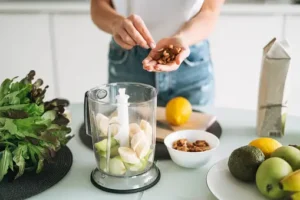
The ingredients you use will have a large impact on the success of your weight loss smoothie. To make healthy smoothies for weight loss, incorporate natural ingredients while avoiding processed or high-calorie extras. Here are some guidelines for selecting ingredients with care when preparing healthy smoothie recipes for weight loss:
Fresh Fruits and Vegetables: For the base of your smoothie, use fresh or frozen fruits and vegetables. These provide important vitamins, minerals, and antioxidants without the additional sugars or artificial additives that are common in canned or pre-packaged versions.
Lean Protein Sources: Including a source of lean protein in your smoothie recipes to help you lose weight is also critical for maintaining muscle mass, increasing feelings of fullness, and assisting with overall weight loss. Consider adding Greek yogurt, cottage cheese, or a high-quality protein powder.
Healthy Fats: Healthy fats are important for satiety and long-lasting energy. Avocado, almonds, and seeds are all great ways to add healthy fats to your smoothie. These fats also aid in the absorption of fat-soluble vitamins, increasing the nutritional value of your beverage even further.
Limit Added Sugars: Use sweeteners like honey, maple syrup, or agave nectar with caution. While they can add sweetness to your smoothie, it’s vital to use them moderately to avoid excessive calorie consumption. Whenever possible, rely on the natural sweetness of fruits.
Limit Processed Items: Avoid highly processed items, such as sugary cereal, flavored yogurt, or store-bought fruit syrups. These generally contain additional sugars, artificial flavors, and preservatives that might damage your weight loss attempts.
- Fiber Rich Ingredients
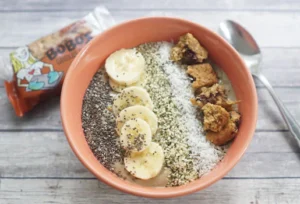
Fiber is a weight loss ally that improves feelings of fullness, regulates digestion, and helps normalize blood sugar levels. To prepare effective smoothie recipes to help you lose weight, use high-fiber items like chia seeds, flaxseeds, or oats.
Chia seeds are particularly recognized for their fiber content and propensity to absorb fluids, providing a gel-like consistency that leads to feelings of satiety. They are also filled with omega-3 fatty acids, which support heart and brain function.
Flaxseeds are another fiber-rich choice that lends a nutty flavor to your smoothie. They are not just high in dietary fiber but also rich in lignans, which have antioxidant qualities and may have significant health advantages.
Oats are a flexible and filling component of healthy smoothies for weight loss. They include complex carbs, fiber, and a plethora of vital vitamins and minerals. Oats might help keep you feeling full and energized throughout the day.
By including these fiber-rich items in healthy smoothie recipes for weight loss, you can boost their capacity to reduce hunger, minimize overeating, and support consistent, lasting weight reduction.
- Increased Protein
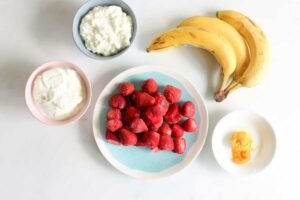
Protein is an essential component of an effective weight loss smoothie. It is needed for maintaining lean muscle mass, which is necessary for a healthy metabolism. Furthermore, protein makes you feel full and pleased, which reduces your desire to snack on high-calorie, less healthy meals.
Consider adding protein-rich foods to your smoothie recipes to help you lose weight, such as Greek yogurt, cottage cheese, or high-quality protein powder. Greek yogurt is high in casein and whey protein, which release slowly and provide a steady supply of amino acids. This can help you feel fuller between meals while also promoting muscle recovery and growth.
Cottage cheese is another high-protein choice that adds creaminess and a rich texture to smoothies. High-quality protein powder is an easy way to increase protein content, especially if you have specified protein intake goals.
By including a source of lean protein in your smoothie, you not only increase its weight reduction potential, but you also add to your overall health and fitness.
- Good Fats
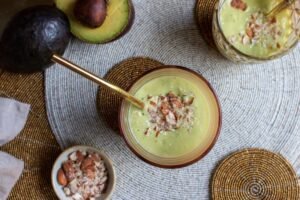
Healthy fats are a sometimes overlooked component of weight loss smoothies. They are essential for encouraging satiety, delivering prolonged energy, and supporting a variety of body activities.
Avocado, almonds, and seeds are all good sources of healthy fats to include in your smoothie. Avocado, in particular, gives a creamy texture and a moderate flavor while supplying monounsaturated fats linked to heart health and inflammation reduction.
Nuts such as almonds, walnuts, and cashews provide healthy fats, fiber, and protein. They add a delicious crunch and a rich, nutty flavor to your smoothie, which can improve its overall flavor.
Chia seeds and flaxseeds, for example, not only provide healthy fats but also texture and thickness to your smoothie. These seeds are also high in omega-3 fatty acids, which have been linked to a variety of health advantages.
By incorporating healthy fats into your smoothie recipes to help you lose weight, you will feel full and satisfied afterward, minimizing the urge to go for harmful snacks or overeat later in the day.
Liquid Base with Low Calorie Content
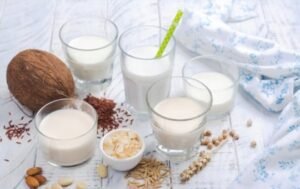
The liquid basis you use for your smoothie can have a big impact on its calorie count. To keep your smoothie’s calorie count under control, use low-calorie ingredients such as unsweetened almond milk, coconut water, or plain water.
Unsweetened almond milk is a popular dairy-free substitute that provides creaminess to healthy smoothies for weight loss without adding extra calories. It is often low in sugar and high in vitamins and minerals like calcium and vitamin D.
Coconut water contains electrolytes naturally, making it an excellent choice for post-workout recovery. However, because of its naturally contained sugars, which might contribute to calorie consumption, it is necessary to utilize it in moderation.
Plain water is the ideal calorie-free hydration option, and it may be used as a base or blended with other liquids to produce the consistency you desire.
By using a low-calorie liquid foundation, you can be sure that your smoothie is nutritionally sound and weight loss friendly.
Including Smoothies in Your Weight Loss Strategy
Smoothies are a versatile and healthful addition to any diet. They can be effortlessly integrated into many elements of your daily routine, each serving a specific role in assisting you in meeting your weight loss objectives. In this chapter, we’ll look at how to incorporate smoothies into your weight loss regimen.
- Meal Substitution
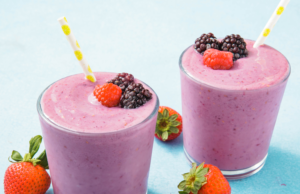
One of the most effective ways to lose weight with smoothies is to replace one meal with a well-balanced smoothie. This meal replacement technique helps you limit your calorie consumption while still giving your body the necessary nutrients.
When using healthy smoothies for weight loss as a meal replacement, make sure they have a good mix of macronutrients, especially protein and fiber. These elements are crucial for fostering feelings of fullness and satisfaction, which are necessary for sticking to a low-calorie diet.
Consider making a nutrient-dense smoothie for breakfast or lunch. To make filling and healthy smoothie recipes to help you lose weight, combine the following ingredients:
- Add a lean protein source, such as Greek yogurt, cottage cheese, or a high-quality protein powder.
- Include fiber-rich items like chia seeds, flaxseeds, or oats to help with satiety and blood sugar stability.
- Include a variety of fruits and vegetables to boost your vitamin, mineral, and antioxidant intake.
- Include healthy fats such as avocado or almonds to improve satiety and long-lasting energy.
- To keep the overall calorie count low, use a low-calorie liquid base such as unsweetened almond milk or water.
Meal replacement smoothies can be an excellent calorie-control and portion-control way that also ensures you get the key nutrients you need to support your weight loss efforts.
- Snack Choice

Smoothies also make great snacks in between meals, helping to satisfy hunger and prevent overeating at the next meal. When utilizing smoothies as snacks, though, it’s crucial to keep portion quantities in mind.
A smaller smoothie, typically 8 ounces in size, can be a filling and nutritious snack. The goal is to make sure your snack-sized smoothie has a good balance of macronutrients, particularly protein and fiber, to keep you satisfied until your next meal.
Snack smoothies are especially useful for satisfying mid-day or late-night appetites. They are a healthy alternative to high-calorie, low-nutritional foods such as chips or sweets. Furthermore, the hydration from the smoothie’s liquid base can help prevent a mistaken thirst for hunger, lowering the likelihood of consuming unneeded calories.
- Post-Exercise Recovery
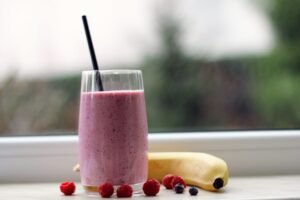
Smoothies can help with post-workout recovery, especially if you exercise often as part of your weight loss plan. After a workout, your body requires important nutrients to repair and develop muscles, and a protein-rich smoothie can help.
After exercise, consuming a protein-rich smoothie serves multiple purposes:
Muscle Recovery: The protein in the smoothie promotes muscle repair and growth, allowing you to recover faster from your workout and improve your overall fitness.
Satiety: A post-workout smoothie might help satiate hunger, preventing you from overeating later in the day.
Nutrient Absorption: Following exercise, your body is poised to absorb nutrients efficiently. Smoothies are an excellent source of important nutrients that can aid in glycogen replenishment, inflammation reduction, and general recuperation.
Make your post-workout smoothie your own by including a high-quality protein source, such as whey protein powder or Greek yogurt, as well as carbohydrates from fruits for energy replenishment. You can also include a source of healthy fats to help with fullness, as well as a dash of honey or maple syrup for natural sweetness.
Note: There might be affiliate links mentioned here. We may receive a commission if you purchase a product through an affiliate link. There is no additional charge for you. Please do your own research before making any online purchases.
- Detoxification and Hydration

Smoothies can also help with hydration and detoxification, which are important parts of general health and can help you lose weight.
Cucumber and celery, for example, have natural diuretic characteristics that can help drain out toxins and extra water weight. These components can be added to healthy smoothies for weight loss to help with detoxification and water retention.
For hydrating smoothie recipes to help you lose weight, use the following ingredients:
- Include water-rich items such as watermelon, cucumber, or celery.
- Add a squeeze of lemon or lime for added taste and hydration.
- For natural electrolytes and hydrating characteristics, use coconut water as the liquid foundation.
By including these nutrients in your smoothies, you may help your body’s natural detoxification processes, stay hydrated, and boost overall wellness.
Most Common Mistakes and How to Avoid Them
As you begin your weight loss journey with healthy smoothies for weight loss, it’s critical to be aware of frequent mistakes that can hamper your success. In this segment, we’ll go over these dangers and offer advice on how to prevent them.
- Excessive Calories

The potential for extra calories is one of the most serious drawbacks of including smoothies in a weight loss strategy. Smoothies can become calorie-dense if not carefully crafted, making it difficult to maintain a calorie deficit, which is necessary for weight loss.
To avoid this mistake:
Measure Ingredients: To correctly measure your smoothie ingredients, use measuring cups or a kitchen scale. This guarantees that you are aware of the calorie value of your smoothie.
Use Calorie-Tracking Applications: To track the calories in your smoothies, consider using smartphone applications or internet tools. Apps like MyFitnessPal can help you track your daily calorie consumption and log your components.
Mind Your Portions: When making and enjoying smoothies, keep portion amounts in mind. Don’t overfill your blender or consume excessively large quantities. A common weight loss smoothie serving size is 8 to 16 ounces.
Limit High-Calorie Additions: Be wary of high-calorie items such as nut butter, full-fat dairy, and excessive sweets. While these can offer flavor and nutrients, they should be used sparingly to keep calorie intake under control.
By following these steps, you can reap the benefits of smoothies for weight loss without consuming too many calories.
- Excessive Sugar Content
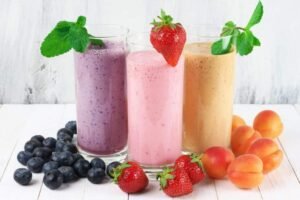
Fruit is a healthy addition to smoothies since it contains vitamins, minerals, and antioxidants. However, you must be aware of the amount of sugar in your smoothies, since too much sugar might sabotage your weight loss attempts and cause energy dumps.
To avoid having too much sugar in your smoothies:
Select Low-Sugar Fruits: Choose low-sugar fruits such as berries (strawberries, blueberries, raspberries), green apples, or kiwi. These fruits are naturally sweet without producing large blood sugar rises.
Use Entire Fruits: When possible, use entire fruits rather than fruit juices or concentrates. Whole fruits include fiber, which aids in the regulation of sugar absorption and keeps you feeling full.
Limit Added Sweeteners: Use added sweeteners like honey, maple syrup, or agave nectar sparingly. Use them moderately to add flavor without adding too much sugar to your smoothie.
Protein and Fiber Balance: Include protein (e.g., Greek yogurt, protein powder) and fiber (e.g., chia seeds, flaxseeds, oats) sources in your smoothie recipes to help you lose weight. These components help to normalize blood sugar levels and minimize the fruit’s glycemic impact.
- Insufficiency of Variety
Repetitively making the same smoothie recipe might lead to flavor fatigue and nutritional deficits. It’s critical to keep your smoothies interesting by rotating ingredients and experimenting with new recipes.
To keep your smoothies interesting, try the following:
Experiment with Ingredients: To produce a varied range of smoothie recipes, experiment with different fruits, veggies, protein sources, and healthy fats. Inspiration can be found in cookbooks, online recipes, or by experimenting on your own.
Seasonal Produce: Utilize seasonal fruits and vegetables. This not only adds diversity to your smoothies, but it also assures that you’re eating fresh and locally sourced products.
Colorful Ingredients: Incorporate a range of brightly colored ingredients into your smoothies. Various hues frequently represent different nutrients and antioxidants. Dark leafy greens, such as kale, have different health benefits than bright orange carrots.
Make Themed Smoothies: Make themed smoothies depending on certain goals or tastes. For example, a “green detox” smoothie with detoxifying components or a “tropical paradise” smoothie with pineapple and coconut are also options.
By combining a variety of ingredients into your smoothie recipes to help you lose weight, you will not only avoid boredom, but you will also ensure that you are obtaining a vast array of nutrients.
- Ignoring Whole Foods
While smoothies can help you lose weight, they should not be used in place of whole foods. A varied diet is necessary to ensure that you get all of the important nutrients your body needs for good health.
To avoid avoiding complete foods:
Maintain a Balanced Diet: Use smoothies as part of a balanced diet rather than as a total replacement for solid meals. Make sure to include whole foods in your regular diet, such as lean proteins, whole grains, veggies, and fruits.
Incorporate Entire Foods: Blend in entire fruits, veggies, and other whole foods. These provide critical nutrients and fiber that processed or refined products may lack.
Plan Your Meals: Make meal plans that include a mix of smoothies and traditional meals. Breakfast might be a smoothie, lunch could be a salad with lean protein, and dinner could be a balanced meal.
Seek Professional Help: Consult a qualified dietitian or nutritionist if you have unique dietary needs or health concerns. They can assist you in developing a thorough meal plan that is in line with your weight loss objectives and nutritional requirements.
Smoothies are most successful as a weight loss supplement when combined with a balanced diet of whole foods. While smoothies have various advantages, they should be seen as a helpful supplement to your entire nutritional approach rather than a primary source of nutrients.
Best Smoothie Recipes to Help You Lose Weight
Some of the best smoothie recipes for weight loss are mentioned below.
- Green Smoothie
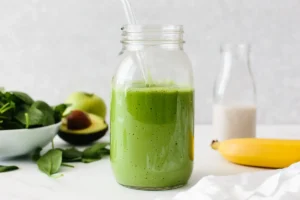
Green smoothies are a great way to get your daily vegetable intake. They are high in fiber and antioxidants, as well as being low in calories. You will need the following ingredients to make a green smoothie:
Ingredients:
1.1 cup chopped kale
2.1 cup fresh spinach
3.1 banana
4.1 apple
5.1 cup almond milk, unsweetened
6.1 tablespoon honey
Instructions:
- In a blender, combine the kale and spinach with the almond milk until smooth.
- Blend in the banana and apple again.
- To taste, add honey.
This smoothie is high in vitamins and minerals and is an excellent way to start the day.
- Smoothie with Blueberries
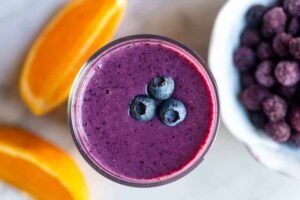
Blueberries are high in antioxidants and have been considered as one of the best smoothie recipes for weight loss. They’re also low in calories, so they’re a great addition to any weight loss smoothie. You will need the following ingredients to make a blueberry smoothie:
Ingredients:
1.1 cup fresh blueberries
2.1 banana
3.1 cup almond milk, unsweetened
4.1 tablespoon honey
5.1 tablespoon vanilla extract
Instructions:
- In a blender, combine the blueberries and almond milk until smooth.
- Blend again after adding the banana.
- To taste, add honey and vanilla extract.
This delicious and nutritious smoothie is ideal for a mid-morning or afternoon snack.
- Pineapple Smoothie

Pineapple is an excellent addition to weight loss smoothies. It contains bromelain, an enzyme that aids in protein digestion and breakdown. Pineapple is also high in fiber and low in calories, making it an excellent addition to any weight loss smoothie. You will need the following ingredients to make a pineapple smoothie:
Ingredients:
1.1 cup pineapple chunks, frozen
2.one banana
3.1 cup almond milk, unsweetened
4.1 tablespoon honey
Instructions:
- In a blender, combine the pineapple and almond milk until smooth.
- Blend again after adding the banana.
- To taste, add honey.
This smoothie is delicious and refreshing, and it’s a terrific way to start the day.
- Strawberry Smoothie
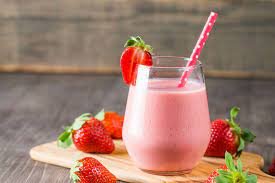
Strawberries are high in fiber and low in calories, making them an excellent ingredient in any weight loss smoothie. They are also high in vitamin C, which is necessary for good skin and hair. You will need the following ingredients to make a strawberry smoothie:
Ingredients:
1.1 cup thawed strawberries
2.1 banana
3.1 cup almond milk, unsweetened
4.1 tablespoon honey
Instructions:
- In a blender, combine the strawberries and almond milk until smooth.
- Blend again after adding the banana.
- To taste, add honey.
This sweet and tasty smoothie is a terrific way to fulfill your sweet taste while still losing weight.
- Mango Smoothie

Mangoes are high in fiber and antioxidants, making them an excellent addition to any weight loss smoothie. They’re also low in calories and high in vitamin C, making them a great choice for glowing skin and hair. You will need the following ingredients to make a mango smoothie:
Ingredients:
1.1 cup mango chunks, frozen
2.1 banana
3.1 cup almond milk, unsweetened
4.1 tablespoon honey
Instructions:
1.Blend the mango and almond milk together until smooth.
2.Blend in the banana again.
3.To taste, add honey.
This tropical and delicious smoothie is ideal for a mid-afternoon snack.
- Avocado Smoothie
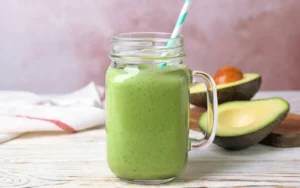
Avocado is counted among the best smoothie recipes for weight loss. It’s high in healthy fats, fiber, and antioxidants, making you feel full and content. You will need the following ingredients to make an avocado smoothie:
Ingredients:
1.A single avocado
2.1 banana
3.1 cup almond milk, unsweetened
4.1 tablespoon honey
5.1/2 a lime juice
Instructions:
- In a blender, combine the avocado and almond milk until smooth.
- Blend again after adding the banana.
- To taste, add honey and lime juice.
This creamy and filling smoothie is ideal for breakfast or as a post-workout snack.
- Smoothie with Peanut Butter and Banana
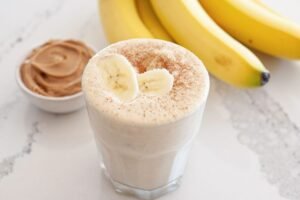
Peanut butter is high in protein and healthy fats, making you feel full and pleased. It produces a wonderful and nutritious smoothie when blended with bananas. You’ll need the following ingredients to prepare a peanut butter and banana smoothie:
Ingredients:
1.1 banana
2.2 tbsp unsweetened peanut butter
3.1 cup almond milk, unsweetened
4.1 tablespoon honey
Instructions:
- Blend the banana and almond milk together until smooth.
- Blend in the peanut butter again.
- To taste, add honey.
This creamy and tasty smoothie is ideal for a mid-afternoon snack.
- Chocolate and Banana Smoothie

If you’re craving something sweet and indulgent, a chocolate and banana smoothie is the perfect solution. As one of the best smoothie recipes for weight loss, it’s also surprisingly healthy, thanks to the addition of banana, which is packed with fiber and vitamins. To prepare a chocolate and banana smoothie, you will need:
Ingredients:
1.1 banana
2.1 tbsp of unsweetened cocoa powder
3.1 cup almond milk, unsweetened
4.1 tablespoon honey
Instructions:
- Blend the banana and almond milk together until smooth.
- Add the cocoa powder and blend again.
- To taste, add honey.
This smoothie is thick and chocolaty, and it’s excellent for a sweet treat without the guilt.
FAQs
What is the fundamental principle of weight loss explained in the article?
Maintaining a calorie deficit, where the calories burned through exercise and metabolism are greater than the calories consumed through food and drink, results in weight loss.
How does a calorie deficit lead to weight loss?
A calorie deficit causes the body to burn stored fat for energy, resulting in weight loss.
According to the article, what role do smoothies play in weight loss?
Smoothies can help you lose weight by providing fiber, essential nutrients, hydration, and the ability to replace meals.
How can the fiber content of smoothies help with weight loss?
Smoothie fiber promotes a long-lasting feeling of fullness, limiting overeating and lowering overall calorie consumption.
What are some nutrient-dense items that you can use in your smoothies?
Leafy greens, fruits, and protein sources like Greek yogurt are examples of nutrient-dense ingredients.
How do smoothies aid in hydration during the weight reduction process?
Smoothies frequently contain water-rich foods such as fruits and vegetables, which help to maintain adequate hydration levels and promote metabolic activities.
Why are smoothies seen as convenient and nutritious meal replacements?
Smoothies can be customized to contain the macronutrients (carbohydrates, protein, and healthy fats) required for a balanced meal while containing fewer calories than a traditional solid meal.
What is the significance of a macronutrient balance in a weight loss smoothie?
A balanced macronutrient ratio helps manage blood sugar levels, minimize cravings, and maintain energy levels throughout the day, boosting the smoothie’s effectiveness for weight loss.
How do smoothies, as described in the article, improve nutritional absorption?
Smoothie blending breaks down cell walls in fruits and vegetables, making nutrients more available for absorption and maximizing their advantages for overall health and weight loss.
How can smoothies help you manage your sugar intake while satisfying your sweet tooth?
Smoothies can be organically sweetened with entire fruits and minimal artificial sweeteners. Whole fruit fiber modulates sugar absorption, promoting consistent energy levels and decreasing the desire for sugary snacks.
Conclusion
Smoothies are a tasty and healthy way to lose weight. You can make a wide range of smoothies that are both delicious and healthy by integrating healthy ingredients such as fruits, veggies, and healthy fats. These eight smoothie recipes are only the starting point; experiment with different ingredients and tastes to create your own one-of-a-kind smoothies. To keep your smoothies as healthy as possible, use unsweetened almond milk and natural sweeteners like honey. You’ll be well on your way to reaching your weight loss goals if you incorporate smoothies into your daily regimen.
Disclaimer: The information provided in this article is for educational purposes only and should not be considered as a substitute for medical advice. Consult a healthcare professional before implementing any home remedies or making significant changes to your lifestyle.






